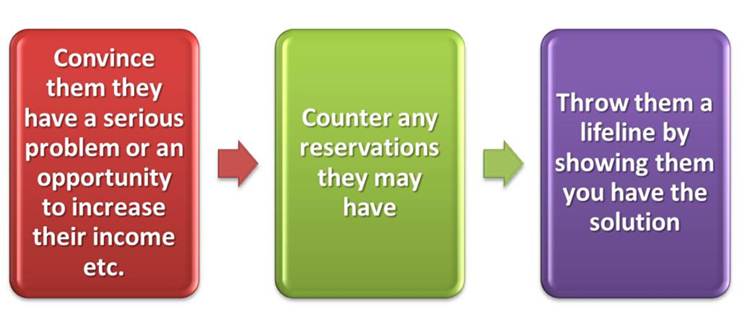Entries Tagged 'blogging for business' ↓
April 23rd, 2012 — Becoming a guest blogger, blog, blogging, blogging for business
You want to widen your audience and what better way to do that than pitching for guest blogging slots.
Did you notice I used the word pitching?
A lot of people will write something, email it to a blogger and expect it to be accepted. Life doesn’t work like that.
The first thing to remember is that you don’t have a right to be published on another blog. That decision remains firmly with the blog owner. It is your job to convince them that your writing will:
- Bring new readers
- Suit their blog’s tone
- Fit in with their niche
- Entertain their readers
So how to you go about making an approach?
What not to do
If you do either of the following, you’re unlikely to be accepted and you may not even get a reply.
- Send in any old post and ask for it to be published
- Chase them within a couple of days if you’ve not heard anything
Why? Because it shows a lack of regard for their blog and respect for them as a blogger.
How to make an approach
First of all do some research and find blogs that you can write for. If your post is to be interesting you’re going to need some background knowledge and experience within the niche you’re writing about.
Once you’ve found a good fit, read through some of the old posts to get a feel for the style, voice and approach used.
Then, you can make contact.
In the first instance, email asking if they would be interested in accepting a guest blog from you. Tell them a bit about yourself and why you think your writing would benefit their readership. Give them a few suggested titles for posts and ask them which one they feel would be useful to their readers.
Don’t be surprised if you don’t get an instant response. Leave it for a week before chasing, and if you do chase, be polite!
You get the green light
Once you get the go-ahead it’s time to write.
You would already have researched the tone and style of the blog you’re writing for, but also think about your layout. Blogs with sub headings and bulleted lists are much easier to read than those that are just a series of long paragraphs.
Keep your language simple, make sure you include some great information and follow the guidelines given to you by the blog owner.
Above all make it interesting and informative. If there is any whiff of a sales pitch going on (however well hidden) your submission will be rejected.
Finally, take great care with your spelling and grammar. The blog owner may be willing to correct the odd typo (after all, we’re all human), but if your post is written badly with loads of errors they are not going to use it.
If you are rejected because of this and manage to get them to agree to a re-submit, make sure it is absolutely perfect otherwise it will be deleted and that will be the end of your relationship.
If your submission is accepted, thank them and offer them another post (although before agreeing they may want to see how your first post is received by their readers) and start building a relationship with them.
As a blog owner myself, I know how valuable good guest bloggers can be – but if you want to get on the ‘good’ list, you’ve got to work for it.
March 12th, 2012 — blog, blogging, blogging for business
This article was written by Chris Peterson, a copywriter for Straight North, a Chicago internet marketing firm. He specializes in B2B and B2C marketing, with experience in informational blog posts, press releases and website content that emphasizes Search Engine Optimization. He is a graduate of Northwestern University, where he earned a Master’s degree in journalism.
The author’s views are entirely his own and may not reflect the views of FreelanceCopywritersBlog.com. If you are interested in producing a Guest Post for this blog, please get in touch with your ideas.
The word “blog” has been tossed around for almost 15 years, but a formal definition still eludes many of us. That’s partly intentional. By nature, blogs are not boxed in. Bloggers define their own guidelines and styles. Bloggers express political opinions, share eggroll recipes, sell disposable shoe covers and show off videos of the new baby wiggling around on the floor.
Many blogs are established with a specific purpose, and others take a while to settle into a comfortable rhythm. Rather than showing you methods to improve your general blog-writing style, this post aims to help you identify the type of blogger you are. From there, you can craft a distinctive voice that accomplishes your purpose as a unique blogger.
The Informative Blogger
We’re talking purely objective blogging here. For more on opinionated writing, scroll down a bit. Informative blogging most closely resembles newspaper and wire writing. These bloggers tend to stick with safe AP Style writing. While the content might be analytical (strong blogs typically are), this blogging style is fact-based and topical. Posts also can be instructional – this post being an example.
The Business Blogger
Granted, most bloggers can claim to be business-related (dropping ads is easy enough these days), but for our purposes, we’re referring to bloggers selling products and services. Commercial blogging can be informative and persuasive, and the formality of voice depends on the product being peddled.
Search Engine Optimization is a writing style often used in business blogging. For example, a blogger might link to a specific item – leather safety gloves, for example – with the intent being that Google will spot the relevant word combination and corresponding link within a blog and assign the target company a higher ranking in searches.
The Persuader
Some bloggers write to change minds, be it for political reasons or simply to encourage readers to take up a cause. If the persuader is starting from scratch, it probably doesn’t hurt to use AP Style to establish a voice of authority – the idea being that if you use proper grammar and punctuation, maybe your opinion is informed, as well. Write professionally because, believe it or not, the stable blogger has more influence than the ranting one.
It’s important for persuasive blogs to link to objective sources, like informative blogs, to reinforce credibility. If your blog is encouraging readers to support a cause, for example, link to a news article that offers an unbiased perspective.
For a persuasive blog post, you want a mix of concrete information and anecdotal evidence. If your goal is to persuade, it’s important to keep your readers engaged and interested so they don’t turn away at the get-go. Use easy-to-digest graphics and visuals to help you make your point. As a blogger, you could have a persuasive edge over, say, a newsletter, in which interaction is limited.
The Personal Blogger
You’re not trying to make money. You might even be in it for fun. But that doesn’t mean you can’t have a basic plan for how you want to present your blog. Are you blogging for your family? Your in-laws? Your classmates?
And then there’s the tone you’ll set. You could be humorous or serious. Perhaps you’re blogging poems and artwork, or maybe you’re posting pictures of the new baby for distant relatives to see. All of these factors will affect how you present yourself, both style- and content-wise.
Personal blogs make for good practice, as well, especially if you’re considering using a blog for business purposes later on. Use a personal blog as an opportunity to try new things. Post photos, videos, polls or surveys. Get a feel for how readers respond so that you’ll know what to expect when you take your show on the road.
We hope you’ll find these tips helpful as you establish yourself as a blogger. Feel free to leave comments if you have any tip you’d add.
Straight North provides a full range of online marketing services, including its innovative Chicago Web design group and highly experienced Chicago SEO team. Straight North develops strategy and executes marketing programs for clients ranging from credit card processing service providers to leather safety glove retailers.
February 6th, 2012 — blogging for business, Content marketing, Content writer, copywriting tips
What’s the Point of Content Generation?
You all know how important it is to produce a continual stream of content.
But under no circumstances is that content to be a blatant sales pitch.
What? I can’t sell? Then what’s the point?
If you generate content that is just all about selling, no one is going to read it and people will be turned off your company because of it.
But, if you generate content that is full of cracking information that people love, you’ll draw them to you. Mind you, just because you can’t directly sell through your content doesn’t mean you can’t use it to gently persuade them to take a specific action.
What I’m talking about here is to get your reader to do something you want them to do (other than put pounds in your till), such as signing up for your newsletter, downloading your latest report or white paper, following you on a social media platform (e.g. Twitter, Facebook, Google+) or subscribe to your blog RSS feed.
By giving them information in exchange for a relatively minor thing (well, minor in their minds), you can enhance and build your relationship with them.
How to get them to do what you want them to do
There are 2 ways to achieve your goal:
- Through your readers’ fear
- Through your readers’ desires
What do I mean?
Well, everyone is motivated either by having a problem they need to solve, or wanting something that’s going to improve their life, income or general well-being.
In either case, the method to go about convincing them you’re the company they need is to use the following format:

First, convince them they have either a serious problem (this will be particularly relevant if you are a company that helps solve problems) or that they will greatly benefit from you. For many companies, they will fall into both categories, i.e. being a problem solver and a benefits giver.
Secondly, you must counter any potential objections the reader may have, such as price etc.
Thirdly, once you’ve established the fear or desire the reader is feeling, you can offer your product/service as the life line they’ve been looking for.
So, there you go.
Every piece of content you produce must convince your reader to do something, but without overtly selling to them.
Next time you write a blog post, create some web copy or post on a social media platform, think about what you want to achieve from your writing and make sure it has a purpose.
Over to you
Does your content always have a purpose?
Have you found any great methods that work for you?
Leave a comment below and share your successes.
Sally Ormond, Copywriter
January 16th, 2012 — blogging, blogging for business, copywriting tips, White Papers
The humble white paper is a great way to help people make decisions.
If you’re unsure what a white paper is, basically, it’s a document that describes a problem and shows the reader how to resolve it:
• It begins by discussing a challenge experienced by its readers
• Gives a compelling case as to why you should use a particular approach to solve the problem
I guess you could say they are a cross between a brochure highlighting the consumer benefits of a particular product or service and an educational magazine article, therefore conveying technical information within a marketing format.
But happens once they’re published?
The information within them is valuable marketing collateral so it seems a waste to allow it to gather dust.
Make the most of your white papers
White papers can be anything from 6 to 50 pages in length; that’s a lot of information.
Whether you publish them online or produce them as print materials, there is a way to get a bit more mileage out of them.
One such way is to repurpose the content for your corporate blog. After all, how many times have you found yourself scrabbling round for blog posts?
There are only so many times you can pester your subject matter experts within your company to write something for you. Plus, (no disrespect to the technical bods) their writing tends to be too complex for your blog readership who are looking for short posts packed with easily digestible information.
Whether you have the time and expertise within your own company to do this, or you hire in an outside copywriter, a single white paper can create a series of interesting posts.
All you have to do is:
• Re-write the content with your new readership in mind
• Devise a way of splitting the content down into individual sections (a 15-20 page white paper should generate about 7 blog posts)
• Find new ways of presenting the information (e.g. info graphics as well as text)
Before you know it, you’ll have generated a whole new series of marketing collateral.
In this way, a single white paper that would normally have been forgotten about can be converted into fresh, vibrant content that will reach out to a whole new market whilst providing you with an endless stream of blog posts.
December 30th, 2011 — blog, blogging, blogging for business, copywriting tips
Oh yes, ‘wearing’ your blog is this season’s latest trend.
No, I haven’t completely lost it; you really can ‘wear’ your blog (in a manner of speaking).
People read blogs because:
• They want to learn something
• They enjoy reading people’s opinions
• They are personal
That last one is the key – they are personal. Your posts are written by you, from the heart and full of personality.
So, if no one is reading your blog posts, that could mean there’s not enough of you in them.
Getting personal
Even if you don’t realise it, your readers are building a relationship with you.
They know a lot about you from your writing. The style you use, your opinions and subject matter all help them build up a picture of what you’re like. And if they like what they see, they’ll keep coming back.
To some, that might sound like a scary stalker kind of scenario, but your readers are based all over the world and read your stuff because they like it – simple.
If you are lacking in readers, or losing them, you’ve got to boost the connection you have with them. So squeeze yourself into you each and every post and flirt with them a little.
How to add personality to your posts
Try these out for size:
1. Write orally
Write as you speak.
As you compose your post, imagine yourself chatting to a friend over coffee and write in that style. This openness will appeal to your readers and create a very accessible and readable style.
2. Add a bio
By simply adding a biography to each post, or an ‘About’ page to your website will show your readers who you are and what you do. Adding a picture is always a nice touch.
3. Respond
If your readers like your stuff enough to comment on it, don’t ignore them, reply to them. This will encourage a two way conversation and may even boost the number of comments you get.
4. Be personal
Throw a few different types of posts into the mix. As well as your informative stuff, chuck in a few personal stories and experiences, may be even a rant or two. This will really connect with your readers and show them the real person behind the blog.
It’s also a great idea to be contactable – whether by email or social media (Twitter, Facebook, LinkedIn) – your readers will know you’re a real person who is also interested in them.
Over to you
What do you do to encourage readers to your blog?
Have you found a particular style that works for you?
Leave a comment below – it’s good to share.
Sally Ormond – Copywriter, blogger and lover of rum toffees









